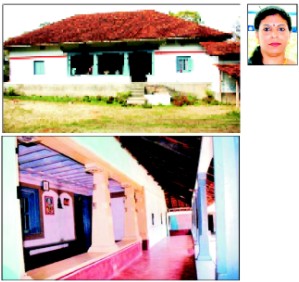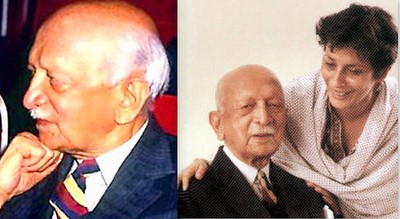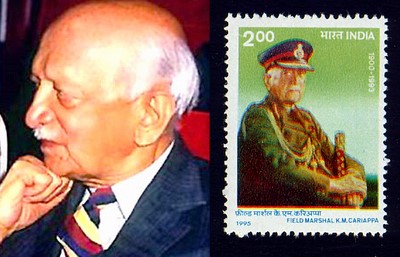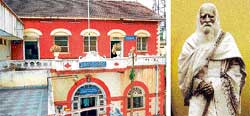Ainmane, the house of the elders in Kodagu, has given an opportunity for the families to live without any discrimination. Men and women were considered equal. If a girl whose married life was not happy and if she had a serious problem in her husband’s place, she had a right to leave her in-laws’ house and live at Ainmane as long as she lived. Obviously, Ainmane protected women by providing a shelter with affection.

The pressures of 21st century’s globalisation and urbanisation has made people of Kodagu re-think about their cultural heritage and rich tradition. Today, one can see this healthy growth in their thoughts too with each ‘Vokka’ trying to protect their Ainmane — more as a prestige issue for every family to have their Ainmane renovated, re-built and protected. With some hope towards a prosperous life, let’s preserve our Ainmanes for posterity.
One finds Kodavas’lifestyle unique. Its recorded history dates back to 18th century. The people here live in a hilly region amidst heavy rain, cold and wild animals. Hence they have their own lifestyle and culture that is unique in its nature.
Kodagu people lead their lives in houses that stand apart in architecture. The house that is remarkable in its structure and a place of unique bonding, that ancestral house is called Ainmane. Ainmane has always stood as a mirror reflecting the Kodava culture, life, family practices, worships and festivals according to seasons.
Kodava culture enjoyed joint family system in the past. It is because of Ainmane that Kodava families have a family name. According to the names, the families of Vokka or Vamsha is identified. Under one Vokka, there are many family units. Many Vokkas have more than 500 units. All these families put together has one Ainmane. The family also has its own ornaments, weapons, implements used for agriculture, the gift from the kings who ruled Kodagu etc. These are treasured items that are collected and preserved.
Based on this, Ainmane is not only a living place for families but it acts like a museum of the community that helps to enhance the cultural heritage of Kodavas.
The relationship between Kodagu and Kerala seems to be closely knit since ages. Ainmane stands as a proof to it. Comparing to the house of Nayars of Kerala (that is called as Taravad) and the Ainmane, we can see many similarities. The influence of Malayalam on Kodava language cannot to be ignored. Similarities can be found between the two languages. The festivals, a few rituals, ceremonies performed and some celebrations have a strong Malayalam impact. It is clearly identified that Ainmane has played a significant role and has provided enough room to have a good relationship between Kodagu and Malayalam province. More important is the structure and architecture of Ainmane that is a living example to recognise the relationship from the past between Kodagu and Kerala.
The Kings who ruled Kodagu built their Palaces in the same style of Taravad houses. Towards the North of Kodagu in a place called ‘Yavakapadi,’ king Doddaveera Rajendra, who ruled Kodagu, built a Palace in Nalaknadu village in 1792. Architecture of this Palace resembles Ainmanes of Kodavas. This clearly shows that architecture of Ainmane has been influenced from Kerala and hence instilled the same kind of style to their Palaces.
Likewise, the Palaces that exhibit their majestic nature seem to be unique, like that of Ainmane that which is a link to depict the history of Kodavas of Kodagu. The pivot of joint families was the Ainmane where in the past era, people of different age groups lived together. The centre was always full of life. But today, because of modernisation, the Ainmane is only an epitome depicting Kodava cultural heritage.
Modern education and urbanisation has opened a new lifestyle for Kodavas. Herein they look down upon their own culture and hence the existence of Ainmane has become obsolete. Higher education has made many to take up urban residence. Therefore, elders of the family are the only people who are living in Ainmane; but after their death, Ainmane is sort of abandoned and edge towards dilapidated condition, without any family living there. In a few circumstances, there are modern style houses coming up. Members of the families live in these modern houses near to Ainmane, which is kept locked. They open it at dawn and at dusk to light the traditional lamp at the Nellakki Baade inside it.
As families become financially stable, they try to migrate to the cities either selling their property or asking somebody to look after it. Such families have abandoned Ainmane and hence, most of them are in a neglected state. Growth in economic conditions and the family planning followed by Kodava families has resulted in one or two children in a family. Moreover, the children are brought up in cities. Education is provided there and hence they get employed in the cities itself. The above reasons have led Kodava families to leave their native. All family members have a right on Ainmane, but their lack of interest and their dislike towards rural lifestyle have prevented them to give a serious thought on their ancestral house.
The house of elders has given an opportunity for the families to live without any discrimination. Men and women were considered equal. If a girl whose married life was not happy and if she had problem in her husband’s place, she had a right to live at her parents’ Ainmane. Obviously, Ainmane protected women by providing them shelter and respect.
The pressures of 21st century globalisation and urbanisation has made people of Kodagu re-think about their cultural heritage and rich tradition. Today, one can see this healthy growth in their thoughts too with each Vokka trying to protect their Ainmane — more as a prestige issue for every family to have their Ainmane renovated, rebuilt and protected. With some hope towards a prosperous life, let’s preserve our Ainmanes for posterity.
Significance of Ainmane
Ainmane is not only a part of the culture of Kodavas, but also of Kodava dialect speaking communities. Though Ainmanes of all sects are similar, they are also called Balyagattumane, gurukarana mane, gurumane etc.
Rev. G. Richter writes in the Gazetteer of Coorg (1870) that Ainmane usually is near paddy fields. Ainmane would be one-storied and square shaped, with an attic. Though east-facing houses are preferred, more emphasis was on houses facing paddy fields. A typical Ainmane will have two doors at the entrance. Entering inside, Nadu mane is found. Living rooms in this square-sha-ped house have small doors and usually no windows.
Ainmane has an open roof space in the middle, so that rain water is collected within and excess water is drained out. The house consists of two doors to go to backyard. Front portion of the house is a canopied open hall called as Kaiyale. It consists of a 2-feet high seater of thick wooden plank which is used as a bench, called Aimara. Daughters-in-law of the house are not allowed to sit on Aimara whereas married daughters of the house can sit on it. Elders of the family usually sit here to exchange cordialities, discuss various issues and take important decisions.
Two massive wooden poles adorn the entrance. The central Nadubaade would consist of three wooden poles. The first pole is called as Kannikamba — it supports the whole roof of Ainmane. The kannikamba is as significant as the thook bolcha (hanging lamp) lit everyday at the Nellakki Baade (prayer room).
During ceremonies, family members would seek blessings by touching the base of kannika-mba and then the feet of elders. Images of sun, moon, flowers etc. adorn Kannikamba and main doors, signifying that Kodavas were nature worshippers.
An integral part of Ainmane is Kaimada — an important structure built in memory of the founder of that family or Vokka. It is a prayer place which is used during happy or sad ceremonies.
At Ainmane, the prime position is given to karona, the head of that particular family. Unique feature about Kodava culture is that men and women share same kind of respect, status and position.
Earlier, families of a Vokka lived together at Ainmane. Later, a few families left Ainmane to live independently and improve their property. The result was joint families gave way to nuclear families. New houses are built in modern architecture. But during festivals and other occasions, Vokka members gather at Ainmane and partake in the ceremonies and feast, symbolising unity.
source: http://www.StarofMysore.com / Feature Articles / March 04th, 2012



 Lingarajendra was not meant to be king. However, a series of lucky breaks landed him on the throne of Kodagu in 1811.
Lingarajendra was not meant to be king. However, a series of lucky breaks landed him on the throne of Kodagu in 1811.



